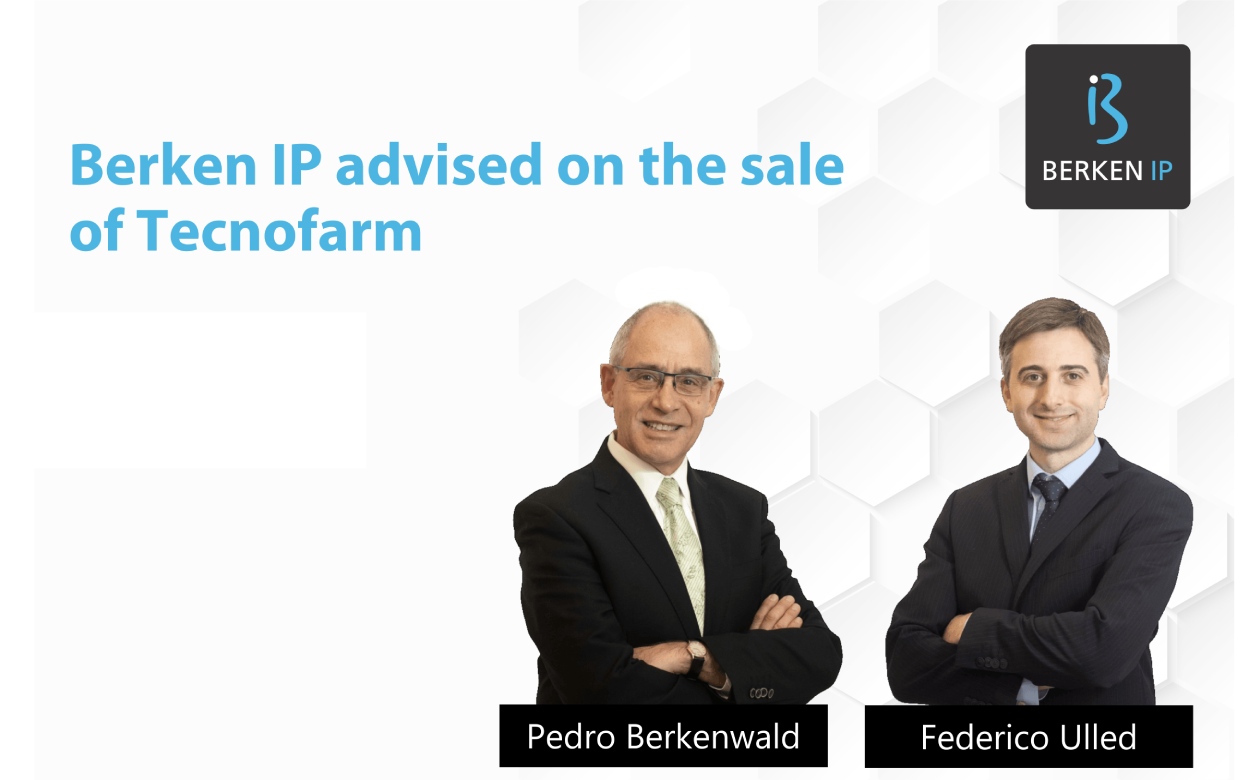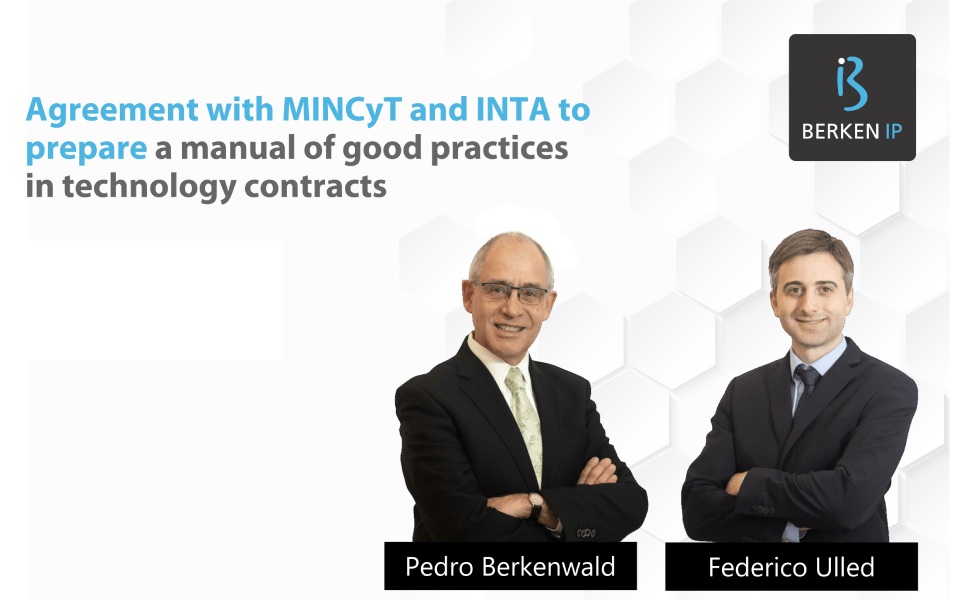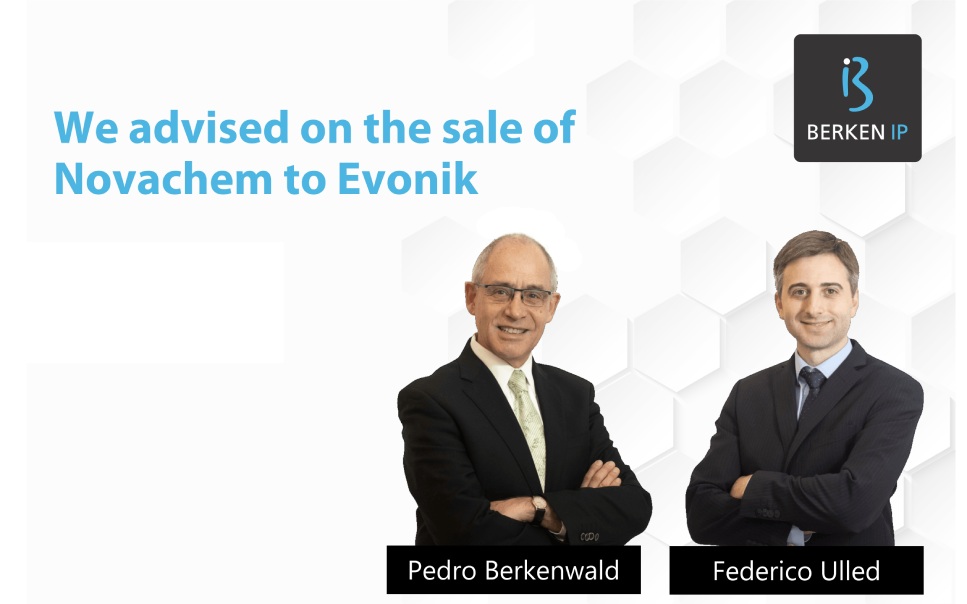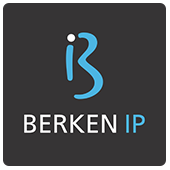
We advised the shareholders of Tecnofarm
We advised the shareholders of Tecnofarm S.R.L. (“Tecnofarm”) on the sale of the company to Laboratorios Calier.
Tecnofarm is an Argentine company with over 35 years of experience in the development and production of veterinary medicines.
Through this acquisition, Laboratorios Calier -based in Spain-, strengthens its presence in the Argentine veterinary market and aims to position the country as a strategic regional hub.
Legal advisors of the transaction:
Seller’s attorneys: Berken IP – Federico Ulled and Pedro Berkenwald (partners), and Tomás Brian Woodley (associate)
Buyer’s attorneys: Deloitte Legal – Eduardo Patricio Bonis (partner), and Sofía Vetrugno (associate)
In-house Counsel: Gloria Carmona López (Laboratorios Calier)

Technology transfer: a tool for transforming knowledge into real value
Technology transfer is one of the most powerful mechanisms for converting knowledge into economic development. In a context where intangible assets represent more than 90% of the market value of the S&P 500, transforming scientific advances into applied solutions is no longer just an option, but a strategic necessity for any country or organization that aspires to compete globally.
However, bringing that knowledge to market is not a simple process. It requires an increasingly sophisticated technical, legal, and operational framework, where the quality of agreements and the strength of negotiations play a central role.
One of the main challenges lies in drafting agreements involving intangible assets such as patents, know-how, algorithms, software, or confidential information. Unlike physical goods, these assets can be used simultaneously by multiple parties without being depleted, which requires more precise and tailored agreement structures.
The definition of the subject matter of the agreement is one of the most sensitive points. It is common for license agreements to mistakenly identify “technology” solely with the final product that will eventually be commercialized, omitting to include the process, technique, or knowledge that makes it possible or that is used in the manufacturing process. This ambiguity can lead to conflicts over what was actually licensed and under what conditions.
For this reason, every technology transfer agreement must include a clear and consistent description of the subject matter, its territorial scope, duration, terms of use, and restrictions, as well as, where applicable, the possible need to supplement that technology with other developments, either from the owner or third parties, and the economic effects that such supplementation could have on both the royalties agreed upon and the price of the product or service. The agreement must be more than a formality: it serves as a roadmap for the parties throughout the course of the relationship and its evolution.
However, a robust agreement is a necessary but not sufficient condition. An informed negotiation process is also key, in which the state of development of the technology, the licensee’s execution capacity, its business model, and the interests of both the technology owner and its potential partners and/or the need for or predictability of future partnerships are analyzed.
One of the most complex aspects is the economic valuation of the business. While there are standard market references, these standardized formulas do not always accurately capture the value generated or the risk assumed. The valuation must be carried out on a case-by-case basis, combining technical, financial, and market criteria, and fundamentally considering the stage of maturity and direct applicability of the transferred technology or the need for new supplementary developments. But beyond the economic return, technology transfer also generates value for society as a whole by allowing knowledge to be translated into concrete solutions that improve people’s lives.
In addition, it is essential that organizations—whether universities, research centers, startups, or companies—have specialized legal and tax advice from the beginning of the process. The early involvement of legal and tax advisory teams with experience in technology transfer allows conflicts to be anticipated and the interests of all parties involved to be protected.
Along the same line, it is essential to consider intellectual property from the earliest stages of development. Protecting intellectual assets with patents or other available means of protection, defining ownership or confidentiality agreements from the outset not only prevents future disputes, but also increases the strategic value of the technology when negotiating its transfer and qualifies the project’s eligibility and attractiveness to investors.
Unlocking the potential of technology transfer requires planning, solid legal structures, and an organizational culture that promotes interdisciplinary collaboration.
The world’s most dynamic ecosystems—such as Israel or South Korea—have institutionalized technology transfer processes as a central part of their economic development strategy. Learning from these experiences—adapted to each local context—can offer valuable insights for replicating and scaling successful models.
In a global scenario where competition is increasingly focused on intangible assets, developing effective capabilities for technology transfer is a strategic priority. Converting knowledge into impact requires appropriate frameworks, trained actors, and a long-term vision that articulates science, law, economics, and the market. An approach that integrates all these elements is essential to bridge the gap between available knowledge and its effective application in the real world, transforming isolated advances into real drivers of development.

Argentina and the PCT: an opportunity to boost innovation
Argentina is one of the few countries in the region that has not yet joined the Patent Cooperation Treaty (PCT), an international system that enables the simplification, unification, and deferral of the costs of protecting inventions in more than 150 countries. This lack of adherence limits the tools available to local researchers, universities, and startups that develop technology with the potential to scale to other markets. Today, those who innovate from Argentina face more barriers than their peers in neighboring countries, not because of technical issues, but because of a pending political decision.
As Argentina is not part of this system, those who develop technology locally—universities, research centers, startups, SMEs—cannot file international PCT applications themselves, and in practice, this means higher costs, greater complexity, and fewer possibilities for protection for local developments with global potential.
Contrary to what many believe, the PCT does not change the underlying rules for granting patents in each country, nor does it limit the ability to examine and decide according to local laws. Its purpose is to simplify the process of international protection of inventions, facilitating a unified filing stage that defers costs, reduces bureaucracy, and allows for better strategic decisions along the way.
Joining the PCT is an opportunity to strengthen local actors. Public research institutions, many national universities, and technology entrepreneurs could benefit greatly from a more agile, centralized, and predictable pathway to obtaining rights abroad. Even well-established industrial sectors with export potential could find advantages in a system that organizes and facilitates processing in multiple jurisdictions.
The treaty allows for the deferral of the filing and processing of applications with national offices for up to 30 months, which not only alleviates the initial economic impact but also provides time to seek partners, validate markets, and decide in which territories to move forward. In addition, it allows for the centralization of certain procedures that would otherwise have to be repeated country by country—such as name changes, assignments, and priority documents—reducing associated costs, and also enables the access to an international search report and a patentability opinion prior to national filings. In this sense, the PCT also acts as a planning tool. It allows research and development teams to plan for the longer term, protect intermediate results, and assess in which markets it makes sense to invest patenting efforts. This flexibility is especially valuable for projects arising from academic or public institutions, where development times are often longer and resources more limited.
In terms of costs, the difference can also be significant. Initiating an international filing without the backing of the PCT requires simultaneous expenditures in multiple countries, in addition to managing different versions of the same application adapted to each jurisdiction. The current system imposes an administrative and economic burden on Argentine innovators that peers in other countries do not face. This structural disadvantage discourages early internationalization and often limits the scope of inventions with high potential.
In the current global context, where technological developments circulate at high speed and international collaborations are increasingly frequent, joining the PCT can represent a competitive advantage. It is not only a matter of facilitating filings, but also of expanding the options available to those who are creating value from Argentina.
In the regional scenario, the case of Uruguay is particularly interesting. The country joined the PCT in 2024. Although companies in the neighboring country are generally smaller than ours, they operate in an environment that provides more advantages to foreign investment. This combination of scale and openness has allowed Uruguay to take a step that better positions its ecosystem for opportunities for technology transfer and international collaboration.
Finally, it is worth mentioning that joining the PCT is not an isolated reform, but part of a set of possible measures to modernize the intellectual property ecosystem in the country. For years, various technical and academic voices have been proposing improvements in the digitization of procedures, greater predictability in deadlines, and support mechanisms for those who embark on the path to patenting. Joining the PCT system would be a step in that direction: a concrete improvement in line with the challenges currently faced by science, technology, and knowledge production in Argentina.
For the above-mentioned reasons, it is worth opening the debate from a constructive perspective. To consider how to add tools that strengthen the local ecosystem, with clear and predictable rules, aligned with international standards. Joining the PCT could be one of them: a decision that does not replace national mechanisms for granting patents, but rather complements them and multiplies opportunities for those who are already working on the present—and future—of Argentine innovation.

ChatGPT, Gemini, and Claude: The Intellectual Property Challenges Posed by Artificial Intelligence
When we think of generative artificial intelligence, platforms like ChatGPT, Gemini, or Claude often come to mind—with their impressive ability to draft text, generate responses in record time, create images, or translate with near-human fluency, among many other functions. But what we see is just the tip of the iceberg. Behind every interaction lies a complex infrastructure of massive datasets, advanced algorithms, and millions of trained parameters with significant economic and strategic value for these platforms. In the world of artificial intelligence, the processes, datasets, and architectures that make it possible are key resources to be protected as intangible assets.
In the early years of the modern AI boom, a culture of openness prevailed. Researchers shared findings, datasets, and open-source models. However, this mindset shifted with the rise of commercial interest and the growing need for legal protection of high-impact developments. Today, leading companies in the field are choosing not to disclose technical details of their most sophisticated models, marking a move toward confidentiality as a strategy to defend their value.
Ilya Sutskever, co-founder and Chief Scientist at OpenAI, admitted that openly sharing advances in artificial intelligence was a mistake. Although some of the datasets used to train models like GPT-4, Gemini, or Claude come from the open web, many include licensed content that remains undisclosed due to intellectual property and privacy concerns.
Adding to this is a growing challenge: the use of protected content without consent to train models. Millions of texts, images, and creative works have been used without authorization from their authors. In the U.S., artists have sued companies such as Stability AI and Midjourney. In 2023, The New York Times filed a lawsuit against OpenAI and Microsoft for the unauthorized use of its journalistic archive, arguing that these models are now capable of reproducing and directly competing with protected content—undermining entire business models.
In this new landscape, intellectual property is facing structural tensions. Patent applications related to AI have surged—with IBM, Microsoft, and Samsung leading the way—but many struggle to meet current eligibility criteria. In July 2024, the United States Patent and Trademark Office (USPTO) updated its guidelines, clarifying that:
- Patent claims that describe specific hardware components or practical applications are more likely to be accepted.
- Purely abstract ideas—such as methods of organizing information or mental processes—are not patentable, as they are not considered inventions.
- Applications that involve model training with real-world technological impact (e.g., improvements in medical treatments) are viewed more favorably.
While generative AI is reshaping the global technological and economic landscape, the legal system is still adjusting its frameworks to keep pace with an unprecedented technological revolution.
In this context, having professional advice to manage intellectual property with a global and strategic vision is essential for navigating this environment and transforming knowledge into real, sustainable value. It requires an interdisciplinary and deeply contextual perspective—one that combines legal, technical, and strategic considerations. It’s not just about protecting assets, but understanding how they integrate into business models, how they are defended in potential disputes, and how they can be leveraged in highly competitive global markets.
Supporting innovation with solid intellectual property structures will be key to turning technological development into long-term sustainable advantages.

Mergers and acquisitions on the rise in Argentina: the importance of protecting innovation
In a challenging regional context, Argentina stands out as an exception: while the mergers and acquisitions (M&A) market in Latin America declined in 2024, our country recorded an increase of 27% in the number of operations during the first quarter of the last year, and the mobilized capital more than doubled, reaching USD 1.75 billion. The figures, published in a report by the global firm Aon plc, reflect a dynamic that goes beyond the circumstantial: they point to a change in the market outlook.
The decline in inflation, the improvement of domestic macroeconomic indicators and the fiscal and trade surplus are generating a more favorable environment for private investment, according to a study by Buenos Aires Capital Partners. If we also consider the deregulations promoted by the government and a decrease in U.S. interest rates, 2025 is expected to be an even more active year for Argentina’s corporate transactions market.
The domestic growth of M&A activity can also be interpreted as a sign of confidence in the innovative potential of the country. The fact that local companies – those most familiar with Argentina´s particular context- are leading this type of movements, sends a strong signal to the international investment community. In many cases, the behavior of the local capital works as a barometer for those assessing investment opportunities in Argentina from abroad.
What’s interesting is not just the scale of the phenomenon, but its composition. Of the 95 transactions recorded nationwide in 2024, many were concentrated in knowledge- and innovation-intensive sectors, such as technology. It’s not simply a matter of buying and selling companies—strategic intangible assets play a critical role, including patents, trademarks, software, technical know-how, or technology developments protected by trade secrets. M&A transactions involve complex challenges related to intellectual property: the due diligence of intangible assets, proper ownership of rights, the assessment of litigation risks, and the valuation of patents and trademarks are all factors that can decisively affect the value of a transaction.
Technological disruption will continue to be one of the main drivers of the global market, as highlighted in Bain & Company’s report “M&A 2025.” Generative artificial intelligence, automation, quantum computing, and renewable energies are pushing many companies to pursue transformation through acquisitions. In this context, protecting innovation is neither a luxury nor a formality: it is a competitive advantage.
Argentina has talent, technology, and a renewed market dynamism. For this wave of transactions to be sustainable over time and contribute to the country’s economic development, one condition is essential: protecting innovation and investing in the growth of our innovative capacity.

The Riyadh Treaty on Design Law: a step towards international simplification and harmonization
On November 22, 2024, in Riyadh (Saudi Arabia), member states of The World Intellectual Property Organization (WIPO) approved the Riyadh Treaty on Design Law. This new international instrument marks a major advancement in the field of intellectual property, as it establishes common rules that simplify design protection in countries that adopt the treaty, through procedures that are simpler, more dynamic and more accessible.
Unlike the Hague Agreement, the Riyadh Treaty does not establish an international registration system but instead harmonizes substantive and procedural rules that countries adopting the treaty must implement in their domestic legislation.
Although this treaty has not yet entered into force, since it requires at least 15 ratifications or adhesions, several countries have already signed it, including Uruguay and Paraguay, reflecting initial regional interest in the harmonization of this type of protection.
It is worth noting that the purpose of an industrial design is to protect the aesthetic or ornamental features of an industrial or handcrafted product. At an international level, the term industrial design encompasses two-dimensional creations as well as three-dimensional creations, while in Argentina a distinction is made between industrial designs (two-dimensional) and industrial models (three-dimensional). Accordingly, it must be understood that the Riyadh Treaty refers to both types of creations.
The main objective of the treaty is to make design protection more accessible, especially for entrepreneurs, independent designers, and small and medium-sized enterprises. To that end, it seeks to reduce bureaucratic barriers and harmonize the essential requirements that an application must meet in the different countries adopting the treaty.
Amongst the most relevant aspects of the Riyadh Treaty there is the definition of a maximum and standardized list of elements that must be filed with the application, with the aim of avoiding additional requirements that could complicate the procedure for applicants. Furthermore, the treaty accepts various forms of representation of the design, such as photographs, drawings, or any other visual representation accepted by the competent registration authority.
The treaty also allows the inclusion of multiple industrial designs within a single application, provided that certain conditions are met. This represents an advantage over systems that require individual applications for each design, and it also helps to reduce filing costs. Regarding the filing date—an essential element for assessing novelty and establishing a priority date—the requirements are simplified to an express or implicit indication that the document constitutes an application; sufficient information to identify the applicant; a clear representation of the industrial design or model; and the contact details of the applicant or their representative. Under certain conditions, countries may require additional elements listed in the treaty, such as a claim or a brief description.
In addition, the treaty establishes a harmonized and mandatory 12-month grace period from the date of the first public disclosure of the design, during which such disclosure does not affect its novelty. This would require some countries to amend their domestic legislation if they adopt the treaty – for example, Argentina, whose current law provides only a 6-month grace period. The treaty also allows applicants to request deferred publication of the design for at least six months after filing, granting greater control over the timing of official disclosure.
To provide greater legal certainty, the treaty introduces mechanisms that allow for the correction of errors or delays without automatically resulting in the loss of rights.
Finally, the treaty encourages the implementation of electronic systems for the filing of applications and the digital exchange of priority documents, modernizing and accelerating procedures.
In conclusion, the Riyadh Treaty constitutes a concrete instrument for facilitating the international protection of industrial designs and models. Although it has not yet entered into force, its adoption marks a trend toward regulatory harmonization and procedural simplification, benefiting creators and designers in an increasingly globalized market. For Argentine designers—especially those seeking to protect their creations abroad— this treaty could, in the future, offer easier access to a more unified and efficient system for safeguarding their creative work at the international level.
Author: Federico Maddonni Brito.

The Doctrine of Equivalents: Protection Beyond Literal Language
The protection conferred by a patent is defined through claims, which determine the scope of protection of the claimed subject matter, whether it is a product or a process. It is within said scope that patent owners can exercise their exclusive right to prevent third parties from using their invention without their consent.
In alleged patent infringement cases, what must be analyzed is whether the alleged infringing object (i.e. a product or process) meets all the features that are literally claimed in the patent, either exactly or by including all the claimed features alongside additional ones provided that the claims are open-ended (i.e. when terms such as “comprising” are included). However, a strictly literal interpretation of the claims could be insufficient and detrimental to the protection of patent owners’ rights, since a third party could avoid a potential patent infringement by making minor modifications in relation to the protected invention. In other words, a purely literal interpretation of the claims could render a patent vulnerable to potential avoidance strategies seeking to circumvent its literal scope of protection.
To address this issue, the Doctrine of Equivalents is applied, which is a legal rule that allows to extend the scope of protection of a patent beyond the scope that can be obtained from the literal wording of its claims, and that is recognized in many of the patent systems of the different countries or territories in the world. Through this doctrine, patent owners have an additional tool to argue that their patent is being infringed, even when the object used by a third party differs from the literally claimed subject matter, provided that such differences are minor and/or insubstantial, and the object can be deemed equivalent.
It is important to point out that, although the general concept of the Doctrine of Equivalents is shared by many jurisdictions, each territory applies specific criteria, mainly developed through its case law, to determine whether an alleged infringing object is equivalent to the invention protected by the patent and whether there is infringement under said doctrine. This means that two patents of the same family, protecting the same invention with an identical scope of protection, could lead to different outcomes against the same object accused of infringement having differences in relation to the protected invention. Therefore, while in one territory the accused object could be deemed equivalent and constitute a patent infringement by equivalence, in another territory it could not be deemed as such and consequently fall outside the scope of protection.
In addition, even though the different territories may have application criteria of the Doctrine of Equivalents that lead to opposite results, there are good practices and fundamental principles that must be considered when drafting a patent application and during its prosecution before a Patent Office. These practices and principles aim to maximize not only the scope of protection obtained from a literal interpretation of the claims of a potential patent, but also the possibility that, in the event of a patent infringement dispute, such patent can rely on the Doctrine of Equivalents to include equivalent objects within its scope of protection.
In conclusion, the Doctrine of Equivalents reinforces the ability of patent owners to effectively protect their invention, allowing the scope of protection of their patents to comprise objects that, although not literally encompassed, can be deemed equivalent to the claimed invention.
Author: Federico Maddonni Brito.

Patent prosecution highway in Argentina
In Argentina, there are three possible ways to request a PPH for patent applications, depending on the application’s characteristics.
1. PPH in cases claiming priority rights from prior foreign patent applications – Resolution INPI 56/2016
Once the priority application, or any foreign application claiming the same priority rights, has been granted by a foreign patent office, the applicant in Argentina may request the application of a PPH.
In this case, the AR PTO shall consider that novelty and inventive step requirements have been met, provided that the foreign patent office applies similar patentability criteria and that the claims in the AR application do not have a broader scope than those granted in the foreign patent.
The PPH request should be filed before the substantive examination is started.
2. PPH in cases not claiming priority rights from prior foreign patent applications – Resolution INPI 56/2016
This case applies to AR applications not claiming priority rights but directed to the same invention already granted by a foreign patent office. A PPH similar to case 1) may be requested by the applicant provided that the foreign application was published and granted after the AR application filing date, and that the applicant can prove that both applications are related to the same invention.
3. Priority Examination Procedure (PEP) in cases where an AR application is the first application related to an invention – Resolution INPI 112/2019
In those cases where the AR application is the first or only application to be filed worldwide for an invention, the applicant may request a PEP once the AR application has been published and after the end of the legal term for receiving third-party observations.
The PEP request should be filed along with an international search report produced by the Information Technology area of the AR PTO. As of the PEP request, Resolution 112/2019 establishes a 60-day term for the PTO to issue a resolution allowing or rejecting the PEP application.
IMPORTANT: PPH does not apply to pharmaceutical inventions that are subject to specific and restrictive patentability criteria. These criteria are usually also applied to agricultural compounds, compositions, and formulations.
Image credit: onlyyouqj at Freepik.

Agreement with MINCyT and INTA to prepare a manual of good practices in technology contracts
We were selected by the Ministry of Science, Technology, and Innovation to collaborate with the National Institute for Agricultural Technology (INTA) in the development of a best practices manual on drafting and negotiation of technology transfer contracts in the fields of agriculture, health, and Information Technology.
The manual aims to foster, harmonize, and elevate the standards in research, development, negotiation, and technology transfer capabilities at a national level between the institutions that make up the National System of Science, Technology, and Innovation (SNCTI) and the private sector.
Team members include:
Adolfo Luis Cerioni
Pedro Berkenwald
Federico Ulled
Germán Alejandro Linzer
Marcelo Labarta
Ezequiel Paulucci
Laura Cerioni
Gabriela Sofía Risso
Federico Cetrángolo

We advised Novachem’s partners in the sale of the company to Evonik
Novachem is a company that researches, develops and commercializes biotechnological, natural and sustainable active ingredients for the cosmetics industry. Buyer´s attorneys: Perez Alati, Grondona, Benites & Arntsen (P. Eugenio Aramburu y Nicolás del Campo Wilson) Guarantee Trust Trustee: TMF Group (Felipe Couyoumdjian) Trustee´s attorneys: Marval O’Farrell Mairal (Roberto Silva y Martín Lanús) Seller´s financial advisors: B.A.M&A Corporate Finance (Norbert Dreyer y Mario Bacman)
